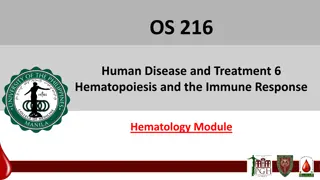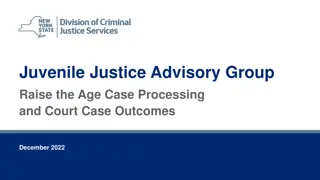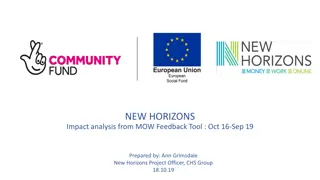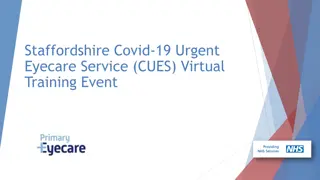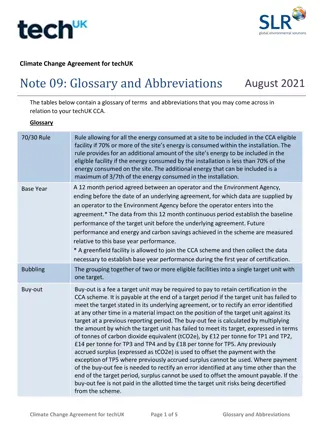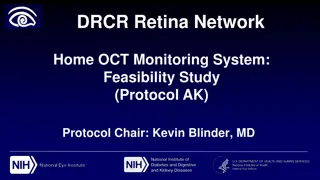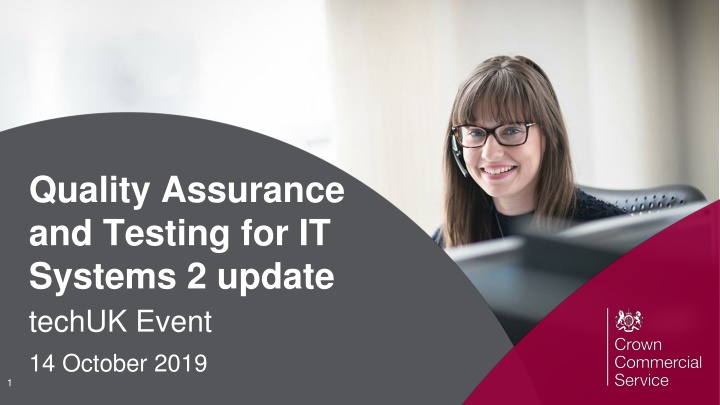
Enhancing Public Sector IT Systems through Quality Assurance and Testing
Discover how the public sector is improving IT systems with quality assurance and testing services, designed to ensure successful implementation and public launch of digital solutions. Learn about the partnership between the private sector and government agencies to provide innovative and cost-effective solutions.
Download Presentation

Please find below an Image/Link to download the presentation.
The content on the website is provided AS IS for your information and personal use only. It may not be sold, licensed, or shared on other websites without obtaining consent from the author. If you encounter any issues during the download, it is possible that the publisher has removed the file from their server.
You are allowed to download the files provided on this website for personal or commercial use, subject to the condition that they are used lawfully. All files are the property of their respective owners.
The content on the website is provided AS IS for your information and personal use only. It may not be sold, licensed, or shared on other websites without obtaining consent from the author.
E N D
Presentation Transcript
Quality Assurance and Testing for IT Systems 2 update techUK Event 14 October 2019 1
Agenda Introductions Objectives Overview & Background How do customers buy? QAT 2 provisional timetable What is a DPS? The DPS Contract Services & scope (with Home Office) Questions? 2
Introducing Crown Commercial Service We help organisations across the entire public sector save time and money on buying their everyday goods and services 3
Introducing Crown Commercial Service Commercial expertise Supporting frontline services Significant savings Customer focused Bulk buying power 4
Objectives To build on the success of RM3810, the public sector requires support from private sector business partners The aim is to provide value for money, with increased scalability and responsiveness to offer industry best practice and provide innovative solutions across a diverse range of business needs These services will sit alongside in-house capabilities which will continue to be developed to allow for a mixed economy Home Office QAT will retain the strategic management direction for the DPS, in terms of requirements and standards Buyers across the public sector will commission and manage their own services 5
Quality Assurance and Testing Background QAT is needed for the successful implementation of new or improved digital systems and services that are suitable for public launch Offers services such as testing environments, specialists, automation Developed with the Home Office who use the existing agreement for their internal, shared, managed QAT service 6
Why Quality Assurance and Testing? Flexible route, new suppliers can apply to join at any time Increased scope/scale of service offerings covering all aspects of Quality Assurance & Testing A dynamic filtering system, giving customers flexibility based on requirements The filter system ensures the right suppliers are notified about opportunities relevant to their service offering 7
Why Quality Assurance and Testing? Required specialist skill and price can be assessed based on individual customer requirements The competition process can be tailored and scaled to match the customers requirements. The services benefit from further competition, enabling buyers to get the best value for money 8
How do customers buy? Customers will run a mini-competition or mini-tender Capable DPS suppliers respond Customer evaluates supplier responses Award to the chosen supplier Customer uses matrix/filter to shortlist suppliers Publish call for competition 9
QAT 2 Provisional Timetable OJEU release Open for applications Clarification period 29 October 31 October 01 November to 01 December 02 December 02 December 02 December Tenders close Customers can access DPS DPS Go-live 10
What is a Dynamic Purchasing System (DPS)? It is an electronic procurement procedure used to develop contracts for goods and services commonly available on the market. Requirements are divided into filters for goods and services. Pre-qualification stage of the procurement process SELECTION STAGE. The DPS should be set up using the restricted procedure and some other conditions as set out in Regulations 28 (Restricted Procedure) and 34 (Dynamic Purchasing Systems) of the Public Contracts Regulations 2015). 11
How does a DPS work? Bidders should read the Bid Pack before commencing the DPS Bidders register for Supplier Registration Service (SRS) Platform Complete the online DPS specific Selection Questionnaire (SQ) The SQ is divided in to 2 parts (SQ) & (DPSQ) SQ Standard selection questions (Mand/ Discretionary) Appointed if they meet all the selection criteria Assessing if they fail any of the selection criteria OR of the strategy is to put all suppliers in to assessing to enable the DPS team to undertake further assessments. 12
Key benefits of a DPS? Simpler, quicker process accessible for both SMEs and other suppliers seeking opportunities to provide services to the public sector. Automated, electronic process streamlined electronic process. Flexible allowing Suppliers to join at any time Choice - increased scope/scale of service offerings and access to buyers across 1,400 public sector organisations. Filtering of supplier offering - ensures suppliers receive notifications of competitions that are relevant to their service offering. Dynamic Customer can create bespoke specifications, competitions and contracts. Supports localism and Social Value - enabling appointed suppliers to bid for business either locally, regionally or nationally. Efficiencies reduces Customers costs and process cycle times. 13
The platform The DPS electronic platform is hosted by NQC technology solutions via the GOV.UK Supplier Registration System (SRS) The platform aligns with Contracts Finder enabling Suppliers to follow the click once to apply process via Contracts Finder 14
The documents (bid pack) The document suite for a DPS is a hybrid of the Simplified Bid Pack, consisting of the following documents: DPS Agreement Contract Terms DPS Needs Customer Needs Attachments e.g. Financial Assessment Template, PDF of the online Selection Questionnaire 15
The DPS Contract DPS Appointment form DPS Core Terms DPS Schedules Order schedules Joint schedules 16
The DPS Contract How the contract works The Supplier is eligible for the award of Order Contracts during the DPS Contract Period Each order contract is between a Supplier and Buyer 17
Insurance Requirements Cyber Essentials Scheme Certificate (or equivalent) 18
Home Office Perspective The Home Office is just one buyer from the framework, albeit a major one. This framework will be our default commercial route for commissioning QAT services We welcome variety and competition within our sourcing strategy, inclusive of SMEs and larger players based fairly on the merits of each tender and the value offered Home Office QAT are respected across government and will share and provide services to other departments when appropriate. On occasion, we will also support other departments in using the framework. 20
Home Office QAT: What we do QAT is part of Home Office Digital, Data and Technology (DDaT) and provides impartial Quality Assurance and Testing services across the Department QAT operate across the full delivery lifecycle, supporting a variety of contemporary digital delivery methods including DevOps leading to continuous release techniques and large-scale, complex integration The Home Office, and potentially other buyers, will maintain in-house capabilities which will continue to be developed to allow for a mixed economy. Suppliers will provide flexible services to meet the fast-moving business demand 21
Home Office QAT: Who we deliver for QAT services are provided to a range of projects and programmes across the Home Office Group and wider government, including; Home Office - UK Visas and Immigration Home Office - Border Force Home Office - HM Passport Office Home Office - Office for Security & Counter Terrorism and agencies Home Office Crime, Police and Fire Group Home Office Corporate Services Home Office DDaT Enterprise Services Ministry of Justice Cabinet Office Department for Environment, Food and Rural Affairs 22
What are the required services? This DPS will enable customers across the Public Sector to buy a range of testing services. The service definitions and requirements for the DPS are based on the Home Office s requirements as the expected largest consumer of services. These services will be required to support product-centric development using modern DevOps, continuous integration and agile delivery methods which require sophisticated automation and tooling capabilities. The full range of QAT activities for build, service and UI testing are in scope, including relevant aspects of integration, performance, accessibility, security and operational acceptance. There is no guaranteed spend through this DPS, with the total value being dependent on business demand from Buyers and the success and effectiveness of the service provision. Current estimates are that services for Home Office QAT will be required up to a value of circa 30m/year initially 23
The services in scope (1) Lot Name Description To provide access to a flexible and cost-effective pool of QA and Test professionals, who will form part of, and be managed by, the core Buyer s team to deliver services across the full lifecycle. To develop and implement test automation strategies and frameworks, typically to support cost effective continuous release methods. To support all aspects of software and platform engineering within a DevOps environment, from a QA perspective. To identify, target and solve performance-based defects at any stage of the development lifecycle. The approach includes Load Testing, Stress Testing, Volume Testing, Soak Testing, Scalability Testing and Capacity Planning. Supporting performance engineering approaches where possible. To establish and manage an appropriate level of QA and testing in line with programme delivery plans, validation and verification of a system against specifications and requirements covering functional and non-functional aspects. Testing will be automated by default with some requirement for manual, exploratory testing and assurance of testing owned by third-parties. Includes the ownership (design and execution) of complex, large scale integration testing 1 QAT Specialists 2 QA & DevOps 3 Load & Performance Testing 4 QA & Testing To determine whether system infrastructures are performant, including network provisioning, platforms and hosting across LAN, WAN and Cloud infrastructures. 5 Infrastructure Testing 24
The services in scope (2) Lot Name Description To help prepare for operational readiness once the service goes into production. OAT will generally focus on risks to the service covering monitoring and alerting, IT support, failover, recovery, resilience, portability and stability. To provide strategic consultancy support across any aspect of QA across software and infrastructure engineering and broader DDaT delivery as appropriate. To assess how far a product or service is easy for its intended audience to use. That audience includes users who access the service via a range of assistive technologies like screen readers, voice recognition and input devices. This includes helping the wider QA or product team to understand accessibility of the service through expert consultancy. To identify threats and measure potential vulnerabilities. The testing scope includes the whole system and not just the software involved. Much of the testing will be automated, supported by advanced exploratory testing and cyber-related defence and assessments. Providing support for all aspects of growing civil servant capability within the QA specialism including learning and development, recruitment, knowledge management and graduate/apprentice onboarding. Operational Acceptance Testing 6 7 Strategic QA Consultancy 8 Accessibility QA and Testing 9 Security QA and Testing 10 QA Capability Development 25
Home Office QAT: FAQs Services are generally delivered onsite, co-located with the dev and delivery teams (currently no opportunity for off-shore or near-shore working) HO DDaT currently has 3 main delivery hubs Croydon, Manchester and Sheffield Security clearance (SC level) is the minimum required for all personnel deployed Pipeline demand is relatively well controlled but will be fluid flexibility required There is no mandate to use the DPS exclusively but it will be the default for QAT 26
Keep in touch cloud_digital@crowncommercial.gov.uk 0345 410 2222 www.crowncommercial.gov.uk @gov_procurement Crown Commercial Service
Thank you 29


